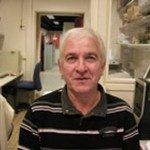Lien vers Pubmed [PMID] – 26820828
Biol Aujourdhui 2015;209(3):195-210
Venomous function is investigated in relation to innate immune function in two cases selected from scorpion venom and serpent venom. In the first case, structural analysis of scorpion toxins and defensins reveals a close interrelation between both functions (toxic and innate immune system function). In the second case, structural and functional studies of natural inhibitors of toxic snake venom phospholipases A2 reveal homology with components of the innate immune system, leading to a similar conclusion. Although there is a clear functional distinction between neurotoxins, which act by targeting membrane ion channels, and the circulating defensins which protect the organism from pathogens, the scorpion short toxins and defensins share a common protein folding scaffold with a conserved cysteine-stabilized alpha-beta motif of three disulfide bridges linking a short alpha helix and an antiparallel beta sheet. Genomic analysis suggests that these proteins share a common ancestor (long venom toxins were separated from an early gene family which gave rise to separate short toxin and defensin families). Furthermore, a scorpion toxin has been experimentally synthetized from an insect defensin, and an antibacterial scorpion peptide, androctonin (whose structure is similar to that of a cone snail venom toxin), was shown to have a similar high affinity for the postsynaptic acetylcholine receptor of Torpedo sp. Natural inhibitors of phospholipase A2 found in the blood of snakes are associated with the resistance of venomous snakes to their own highly neurotoxic venom proteins. Three classes of phospholipases A2 inhibitors (PLI-α, PLI-β, PLI-γ) have been identified. These inhibitors display diverse structural motifs related to innate immune proteins including carbohydrate recognition domains (CRD), leucine rich repeat domains (found in Toll-like receptors) and three finger domains, which clearly differentiate them from components of the adaptive immune system. Thus, in structure, function and phylogeny, venomous function in both vertebrates and invertebrates are clearly interrelated with innate immune function.



